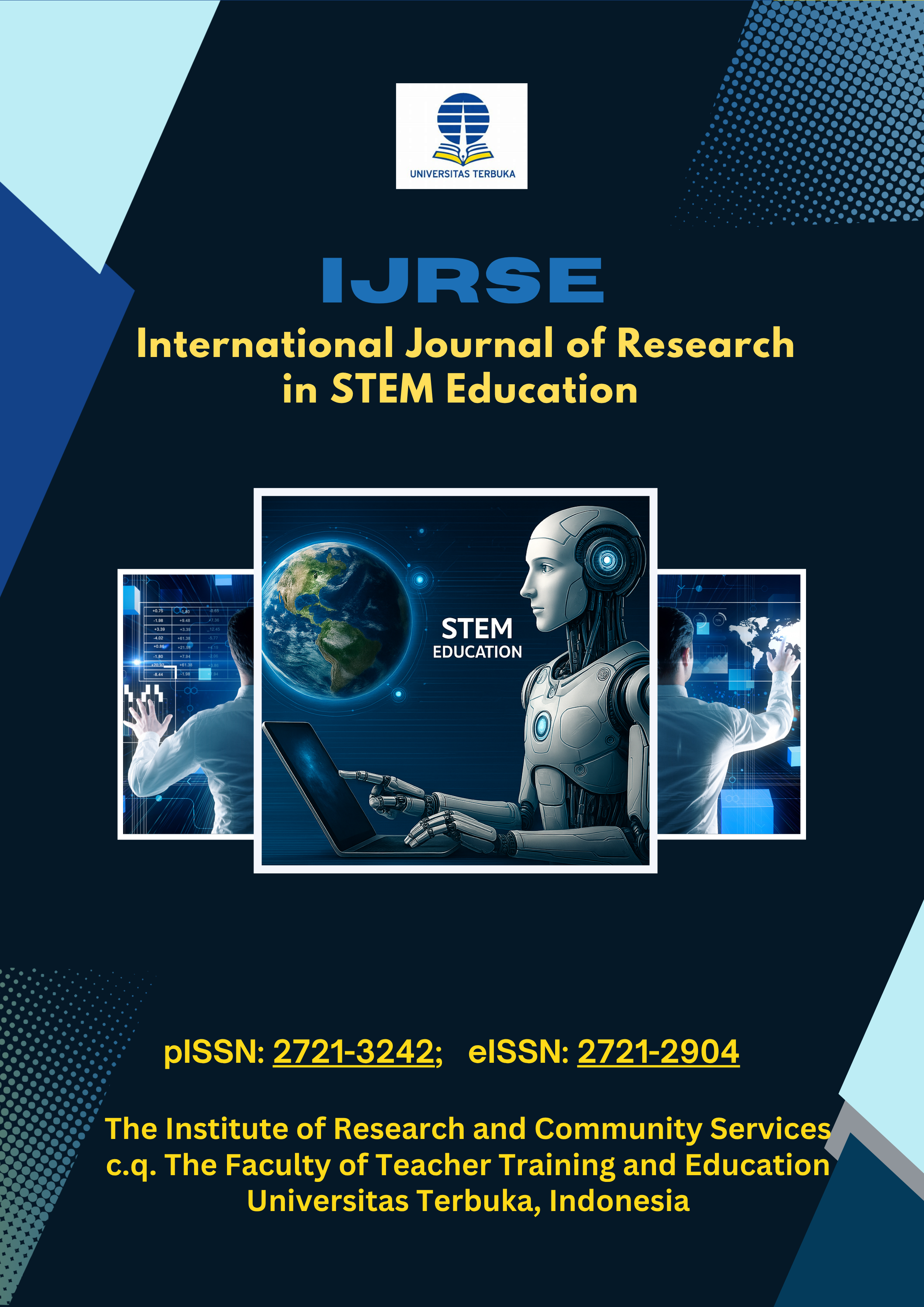Analysis Student Needs for the Development of Contextual-Based STEM Approach Learning Media in Online Learning: An Evidence from Universities in Jambi, Indonesia
DOI:
https://doi.org/10.33830/ijrse.v3i1.495Abstract
In 2020, higher education must implement online learning because of pandemic COVID 19. Learning with the science, technology, engineering, and mathematics(STEM) approach is rarely done in online learning.The first step in implementing the STEM approach on campus in online learning is to develop contextual learning media based on the STEM approach.This study analyzes students' needs for contextual learning media based on the STEM approach in Basic Physics courses in online learning. This research method is a descriptive study with research subjects are 141 second and third-year students of the Physics Education Program ofUniversitas Jambi and the State Islamic University of SulthanThahaSaefudin Jambi.The subject has completed basic physics courses. Data collection was carried out from preliminary observations and the use of a student needs analysis questionnaire.The results showed that students found it difficult to understand several topics in basic physics subjects.It is caused by a lack of instructional media, a lack of descriptions, a less detailed description of formulas, inadequate use of the STEM approach, and a lack of higher-order thinking skills for student practice.From the questionnaire results, it was also found that students needed learning media with a contextual-based STEM approach to help them understand the topics of Basic Physics courses in online learning.
Downloads
Published
How to Cite
Issue
Section
License
Copyright (c) 2021 Haerul Pathoni

This work is licensed under a Creative Commons Attribution-NonCommercial 4.0 International License.
Content Licensing, Copyright, and Permissions
1. License
International Journal of Research in STEM Education (IJRSE) adopts the Creative Commons Attribution-NonCommercial 4.0 International License (CC BY-NC 4.0) as the optimal license for the publication, distribution, use, and reuse of scholarly works for non-commercial purposes.
The non-commercial use of the article will be governed by this license, which allows others to share and adapt the work provided proper attribution is given to the author(s) and the journal.
Creative Commons Attribution-NonCommercial 4.0 International License.
Creative Commons License: CC BY-NC 4.0
2. Author's Warranties
The author warrants that the article is original, written by the stated author(s), has not been published before, contains no unlawful statements, does not infringe the rights of others, is subject to copyright vested exclusively in the author, is free of any third-party rights, and that all necessary written permissions to quote from other sources have been obtained by the author(s).
3. User Rights
The International Journal of Research in STEM Education aims to disseminate published articles as freely as possible. Under the Creative Commons license, users are permitted to copy, distribute, display, and perform the work for non-commercial purposes only, provided that proper attribution is given to the author(s) and this journal.
4. Rights of Authors
Authors retain the following rights:
- Copyright and proprietary rights related to the article, such as patent rights.
- The right to use the substance of the article in future works (e.g., lectures, books).
- The right to reproduce the article for personal purposes.
- The right to self-archive the article.
- The right to enter into separate, additional non-exclusive contractual arrangements for the distribution of the article’s published version (e.g., posting to an institutional repository or publishing it in a book), with acknowledgment of its initial publication in IJRSE.
If the author has a non-exclusive publishing contract with another publisher under a more restrictive license, the author still retains all rights to republish or distribute the work elsewhere, including commercially, as the author is not bound by the license conditions imposed on the journal.
5. Co-Authorship
If the article has multiple authors, the signatory of this agreement warrants that he/she has been authorized by all co-authors to sign this agreement on their behalf and agrees to inform all co-authors of the terms of this agreement.
6. Termination
This agreement may be terminated by either the author or IJRSE with two months’ notice if the other party has materially breached this agreement and failed to remedy such breach within one month after receiving written notice.
No breach or violation of this agreement will cause automatic termination or affect the license granted to IJRSE.
7. Royalties
This agreement entitles the author to no royalties or other fees. To the extent legally permissible, the author waives the right to collect royalties in respect of any use of the article by IJRSE or its sublicensees.
8. Miscellaneous
IJRSE will publish the article (or have it published) once the editorial process has been successfully completed.
The journal reserves the right to edit the article for style, punctuation, spelling, capitalization, referencing, and consistency as deemed appropriate.
The author acknowledges that the article will be made publicly accessible, and such access will be free of charge for readers.








